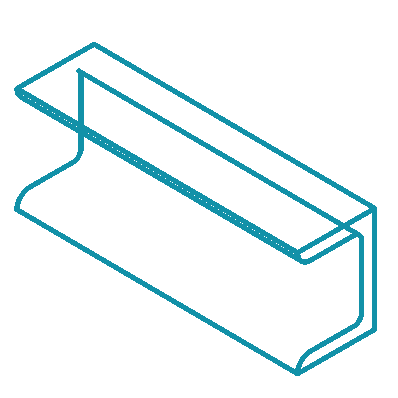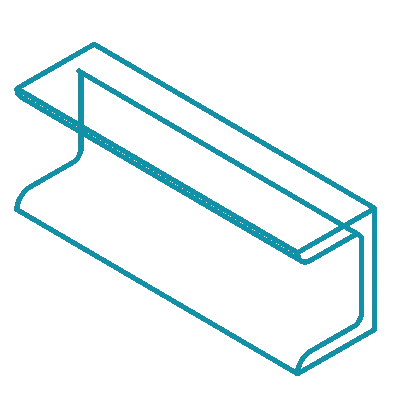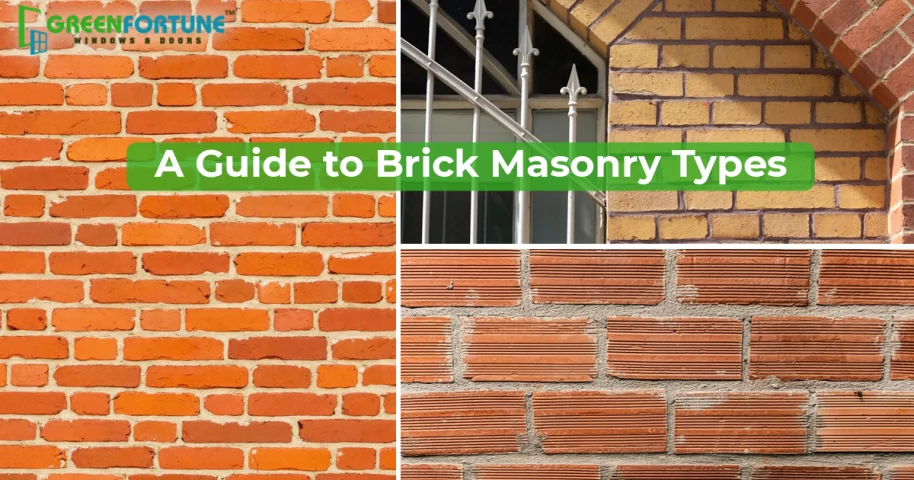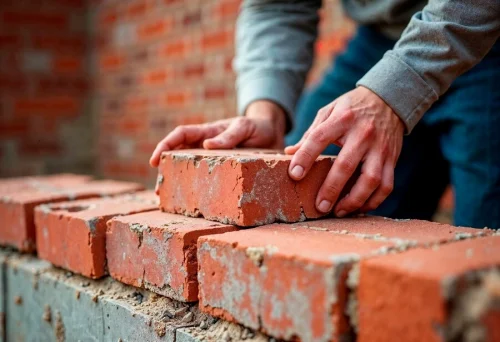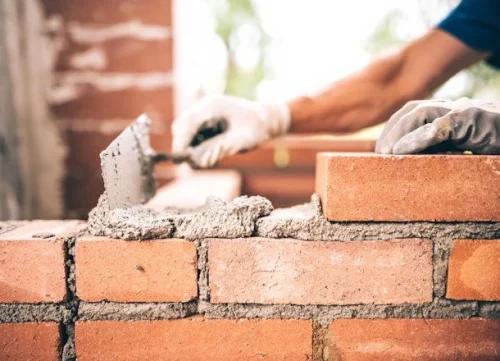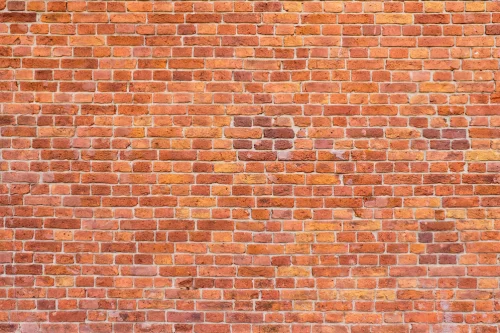
A Comprehensive Guide For Understanding the Methods & Types of Concrete Curing
May 2, 2025
Timeless Colonial House Style: Design, Interiors, and Architecture
May 3, 2025When you look at a wall, it may seem like just a bunch of bricks stacked together, neatly. But there’s a bit of science and a bit of art behind how those bricks are arranged.
Brick masonry is the method of laying bricks to build walls, pillars, and other structures. But bricks alone don’t make a wall, right? It’s how they are arranged and what sticks them together that matters.
If you are building a house or renovating, understanding the brick masonry types can help you make smarter decisions.
Brick Masonry Types Based On Mortar
Mortar is the paste that holds the bricks together. Without it, the bricks would just fall apart like a stack of Jenga blocks.
1. Cement Mortar Brick Masonry
Cement is mixed with sand and water to create mortar, and this holds the bricks in place. If you are getting brick masonry work done for your home, this is the most likely option you will be using.
2. Mud Mortar Brick Masonry
Before cement became common, people used plain mud to join bricks. It is still used in many villages for small homes and temporary structures.
Also read: Different types of construction bricks you must know
Brick Masonry Types Based On Wall Type or Design
This is about the structure, design or type of bricks used in the wall.
1. Reinforced Brick Masonry
Reinforced brick masonry uses steel rods, mesh or wires in between the layers of bricks. This makes the brick structure stronger and helps in resisting cracks during earthquakes or heavy loads.
2. Cavity Wall Masonry
Cavity wall masonry uses two layers of brick walls with a small air gap in between. That airspace helps control the temperature inside the building.
3. Facing Brick Masonry
Facing brick masonry uses high-quality bricks that are neat, smooth, and look good on their own. These bricks are meant to be seen just as they are, without plaster or paint. They come in different colours and shapes.
4. Composite Brick Masonry
Composite brick masonry uses bricks with other materials like stone or concrete blocks in the same wall. This reduces the cost while still keeping the wall strong.
5. Hollow Brick Masonry
Hollow brick masonry uses bricks that have small holes inside them. These bricks are lighter than regular bricks and offer better heat protection.
6. Solid Brick Masonry
Solid brick masonry uses bricks with mortar, closely placed together with no holes or spaces. This method is best for foundation walls, exterior brickwork construction, etc.
Also read: Beautiful wall brick patterns for your home
Brick Masonry Types: Bonding Patterns
The way bricks are arranged in the wall is called a bonding pattern. It affects how strong the wall is and how it looks.
1. English Bond
This is one of the strongest brick patterns. One row has long bricks (called stretchers), and the next row has short ones (called headers). This mix makes the wall strong and helps spread the weight evenly. It’s perfect for big buildings, tall walls, and strong foundations.
2. Flemish Bond
This one looks better but is a little less strong than an English bond. In every row, long and short bricks are placed one after another. It’s great for house walls and outer walls where both strength and style matter.
3. Stretcher Bond
This is the easiest and cheapest pattern. All bricks are placed with their long side facing out. It’s quick to build and perfect for light walls like room dividers. But it’s not used where the wall has to carry a lot of weight.
4. Header Bond
Here, all bricks are placed with their short side facing out. It makes the wall thick and helps build round or curved walls easily. It’s good when you need a tight, strong curve, but it uses more bricks and mortar.
5. Rat-Trap Bond
This one saves bricks and keeps the house cool. Bricks are placed standing up, leaving space inside the wall. These air gaps help reduce heat. It’s used in eco-friendly buildings, especially in hot places.
6. Dutch Bond
This is almost like the English bond but changed a bit to make the corners stronger. It’s great for long walls where the edges need to be firm. It takes a little more time, but it is strong and neat.
7. Garden Wall Bond
This is used where looks matter more than strength. It follows a pattern of three long bricks and then one short brick. It’s great for garden walls, fences, and outside walls that don’t need to hold much weight.
8. Stack Bond
This is a modern style. Bricks are stacked right on top of each other, like in rows and columns. It looks clean and fancy, but it’s not strong. So, it’s used only for show, on front walls or inside homes.
9. Zigzag Bond
In this pattern, bricks are arranged in a zigzag or V-shape. It looks cool and catches the eye. It’s used for floors, borders, or feature walls and not for regular walls.
10. Diagonal Bond
Here, bricks are placed at an angle, usually slanting at 45 degrees. This breaks the straight lines and stops cracks from forming. It was common in old buildings and long walls, but is not used much now.
Also read: Everything you need to know about red hollow bricks
Final Takeaway
Once you understand the brick masonry types, it actually feels quite simple. It all comes down to three things- the kind of mortar used, the way the wall is built and how the bricks are placed. Each of these had a role in how strong, stable and durable the wall will be.
So, when you are planning to build, make sure the mason brick work is done by an experienced person, so that you need not worry about it for decades.
And while you plan your walls, don’t forget the windows and doors. GreenFortune’s uPVC windows and doors go well with any brick wall. They are strong, long-lasting, and help keep your home cool.
FAQs
1). Which brick bond is strongest and weakest?
The strongest brick bond is the English bond because it spreads the weight well. The weakest is the stack bond, as it has no overlapping bricks and is used only for decoration.
2). What are the types of bricks used in brick masonry?
Common types of bricks are clay bricks, concrete bricks, engineering bricks, fly ash bricks, laterite bricks, and hollow bricks. Each type is used based on cost, strength, and how well it keeps the home cool.
3). What are the tools and equipment used in brick masonry?
Brick masonry uses simple tools like a trowel (for spreading mortar), spirit level (for straight lines), hammer, measuring tape, string, and a bucket for mixing mortar or water.


